"I want to be involved in research that can save as many people as possible from the premature deaths similar to my fathers."
Sugaya Yuka, 1st year Graduate School of Human Sciences
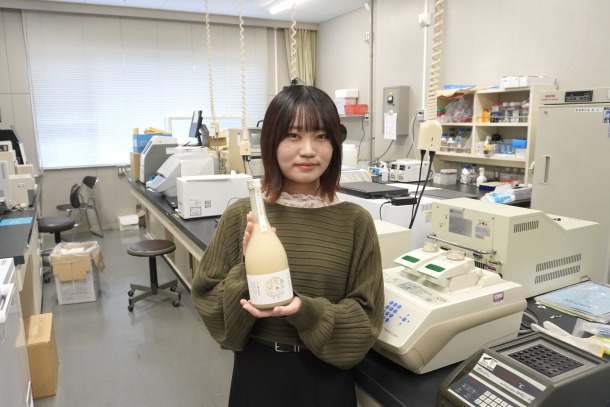
At the Hara Laboratory in Building No. 100 on Tokorozawa Campus
Sugaya Yuka has been researching autophagy components contained in sweet potato fermentation products (shochu lees) discharged during the shochu manufacturing process, and has achieved remarkable results, including winning the Best Poster Presentation Award at the 37th Annual Meeting of the Japanese Society for Animal Cell Technology 2024 (hereinafter referred to as JAACT2024). In addition to her own research, she is also actively working to put research into practical use, such as by working on product development with her lab colleagues. We spoke to Sugaya about her research theme, student life, and future prospects.
--Please tell us about the topic you are researching.
I am currently researching autophagy-activating components in fermented sweet potato products. Simply put, autophagy is an intracellular recycling system. In 2016, biologist Yoshinori Ohsumi elucidated its mechanism and was awarded the Nobel Prize in Physiology or Medicine, bringing it into the limelight.
In my research, I am investigating in detail what components in food activate autophagy and through what pathways.
Left photo: Sweet potato fermentation products heated and dried for a long period of time
Right photo: Water extract of fermented sweet potato. The powder in the left photo is mixed with water and centrifuged, and the supernatant is removed.
What first got you interested in this topic?

An experiment in progress. A safety cabinet, a box-shaped experimental device, is used to prevent foreign objects from entering from the outside.
I narrowed down my specific theme through research at the Hara Taichi Laboratory (Faculty of Human Sciences), where I am affiliated. The Hara Laboratory aims to prevent disease through the power of diet, and is conducting research to clarify food functionality at the molecular level. One of the results of their work was the discovery that fermented foods have the potential to highly activate autophagy.
When I was searching for my own theme within the framework of fermented foods, I became interested in fermented sweet potato products, which are an unused resource that is discharged during the shochu manufacturing process, from the perspective of the SDGs. In addition, previous research had revealed that fermented sweet potato products have functional properties in other animals, such as reducing stress in pigs and improving meat quality, but it was not clear whether they also functioned in humans, so I decided on this theme because I wanted to investigate this.
--Please tell us about the rewarding and difficult aspects of continuing your research.
Recently, a diet method in which you fast for 16 hours a day has become popular and is called the autophagy diet, but autophagy is not a diet method. Because this misconception is spreading, I feel rewarded when I can spread the correct concept of autophagy through my presentations, that it is an intracellular recycling system and an important function for maintaining health. At academic conferences, there are people who know nothing about autophagy, so I try not to use technical terms and to explain it in a way that even elementary school students can understand. It's always nice when my efforts pay off and people understand.

A scene from when she presented her research at a conference. The poster that won the Best Poster Award at JAACT2024.
On the other hand, I think this is common in basic research, but I feel frustrated when the expected results do not come easily. I know that experimental results are facts and that I have to accept them as results, and that there is no need to get emotional, but I also feel impatient and sorry for the people who had high expectations of me. However, even in such situations, rather than frantically trying to get as many results as possible, I try to sincerely face what I can read from each piece of data and be conscious of how to use it for the next step.
-Why did you decide to go School of Human Sciences at Waseda University?
I originally aimed to enter medical school after losing my father to illness at an early age. However, when I reconsidered my career path in my second year of high school, I found School of Human Sciences, which offered a broader approach to health research. I studied hard with the determination that I absolutely wanted to study here, and I was able to enroll.
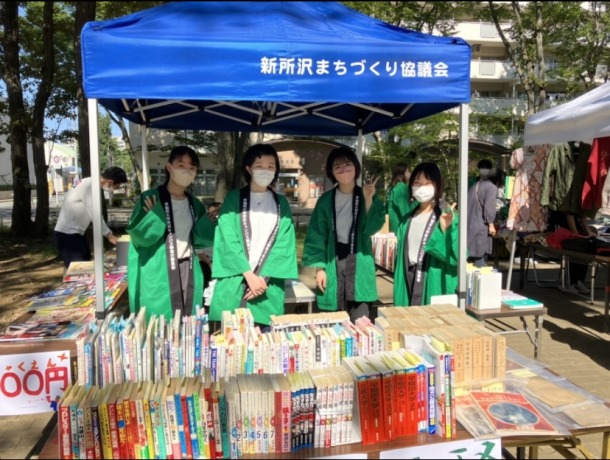
After enrolling at the university, Sugaya (far right) also served as a member of Tokorozawa Campus Festival Executive Committee. The photo shows her setting up a secondhand book with high school students at the Tokorozawa City Autumn Festival as part of his activities as an executive committee member.
--Why did you choose the Hara Laboratory?
This is because the Hara Laboratory focused on themes that interested me, such as health and disease. From the beginning of my enrollment, I had wanted to work in a research position in the future where I could be involved in the fundamental aspects of product creation, and I wanted to join an experimental seminar. I was also attracted to the Hara Laboratory because it focuses not only on experiments but also on social implementation, so I decided to join. For example, in April 2024, we collaborated with an advertising agency and Furumachi Koji Seizosho, a fermented food business, to develop a non-alcoholic sweet sake product called "Kanpai" for toasting, and sold it at Tokorozawa Campus Festival 2024. I remember that I felt that I had broadened my horizons by interacting with various people, and that it was a lot of fun.
I think that the Hara Laboratory is unique in that it is able to take responsibility for applying research results and developing them into something that can actually be used in society, so every time I am involved in a project I feel glad that I belong to this laboratory.
Left photo: With the people who helped us out at the "Canpai" media launch and tasting event held in Niigata Prefecture in April 2024. From the left, a person from the advertising agency, Sugaya, Professor Hara, and a person from Furumachi Koji Seizosho.
Right photo: The "Canpai" stall at the Tokorozawa Campus Festival in October 2024. Sugaya is second from the left.
--Please tell us about your future prospects.
In the future, I would like to work in a research field such as food development, where I can utilize the experience I gained in the seminar and my own research. I would like to be involved in research that can save as many people as possible from those who die early, like my father.
No. 888
Interview, text and photography: Waseda Weekly Reporter (SJC student staff)
Tanabe Saya 4th year School of Culture, Media and Society
【Profile】
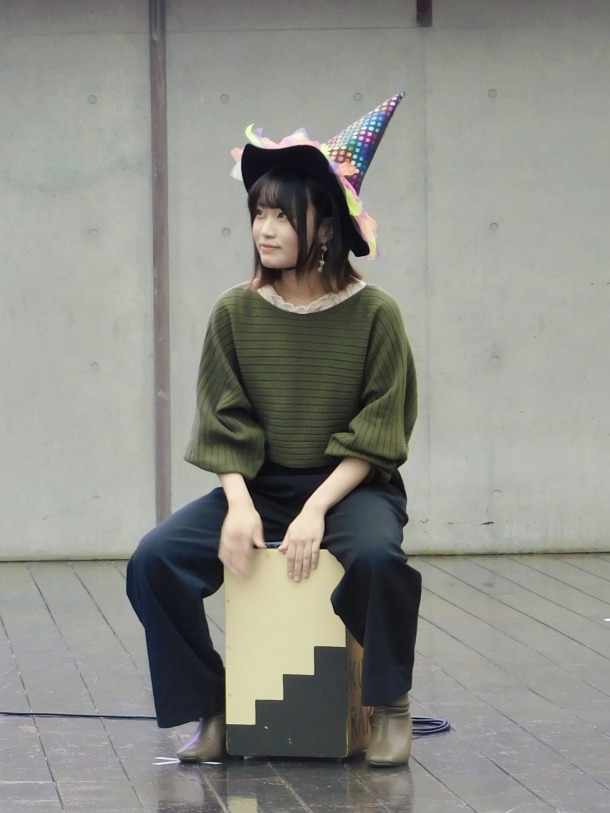
This photo was taken when she performed on stage together with her friends at a festival in her hometown of Utsunomiya. Sugaya played the cajon.
Born in Tochigi Prefecture. Graduated from Ishibashi Prefectural High School. Her hobby is music, and she is trying to play various instruments such as the piano and cajon. She says that her favorite thing about Tokorozawa Campus is that it is full of nature, and she goes for walks to refresh herself between research projects.

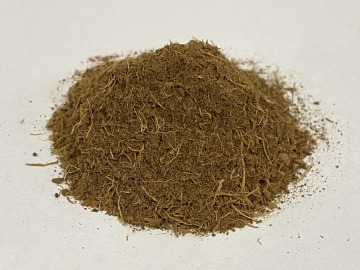
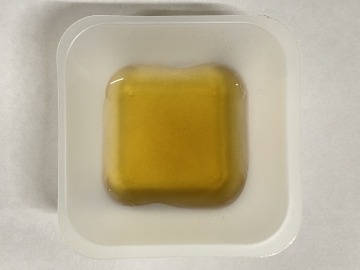
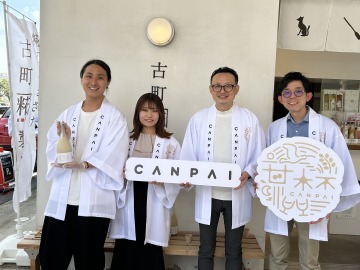
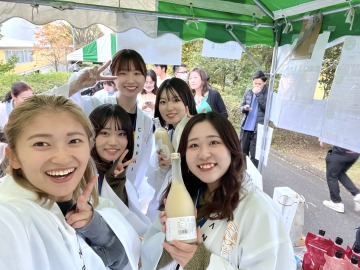
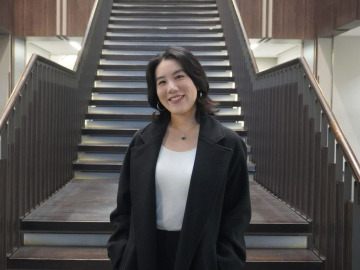
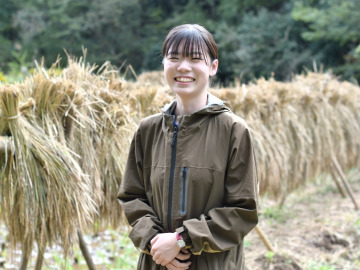
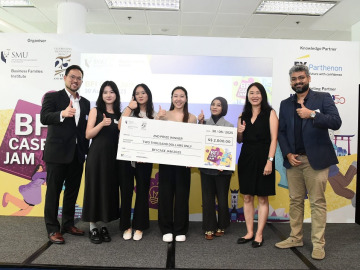
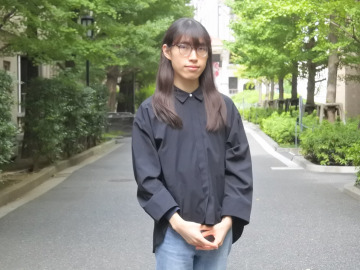
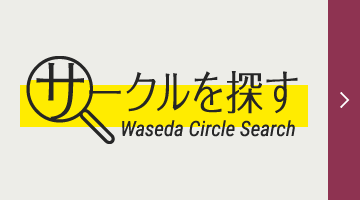
![[Save version] Map of the four main campuses](https://www.waseda.jp/inst/weekly/assets/uploads/2025/09/17cb2975123fc5103172ef60bd98608d-610x458.jpg)

